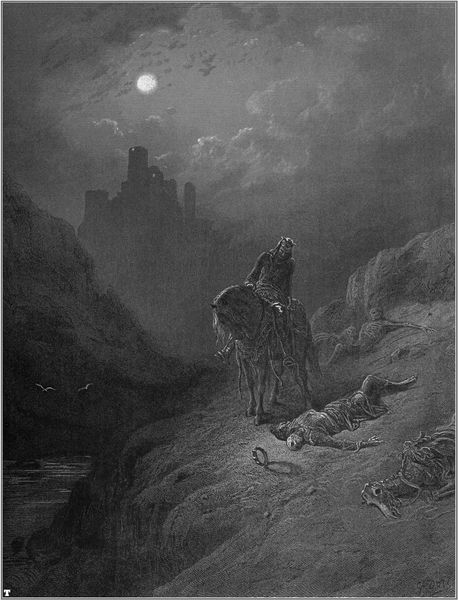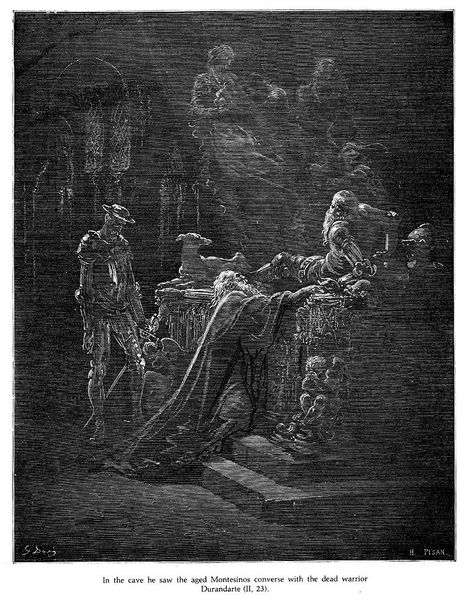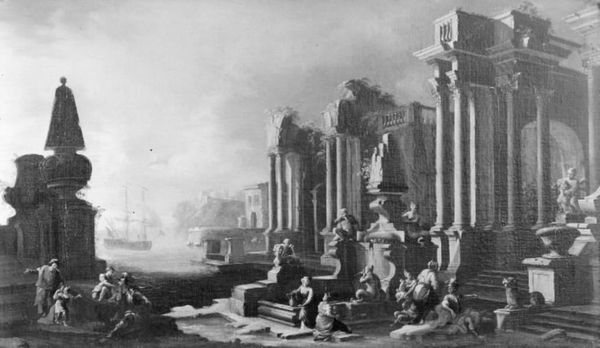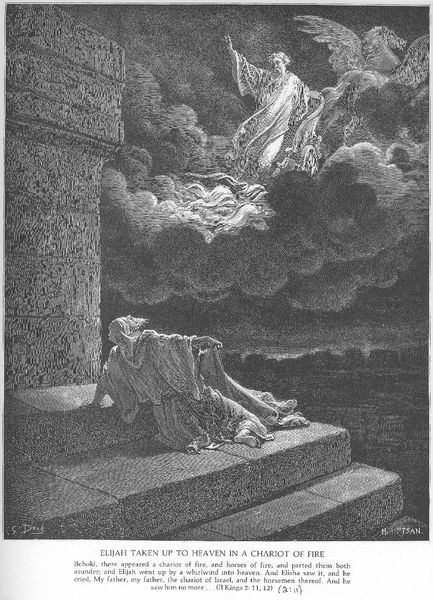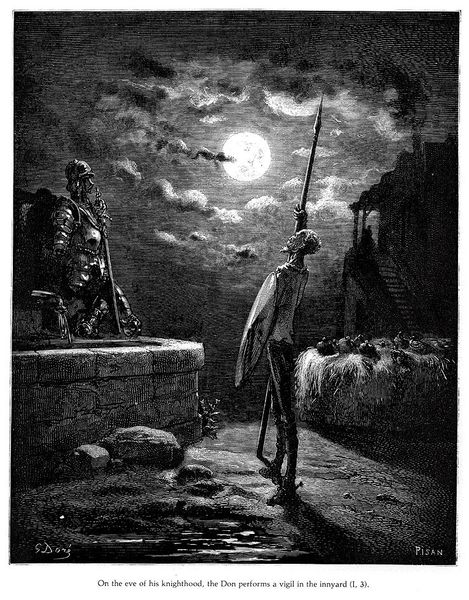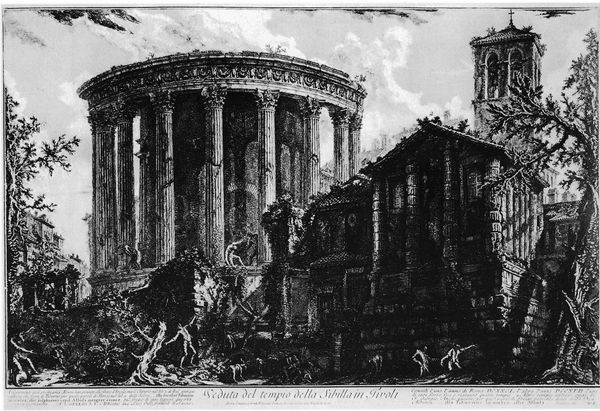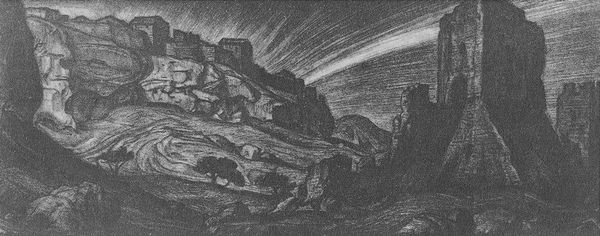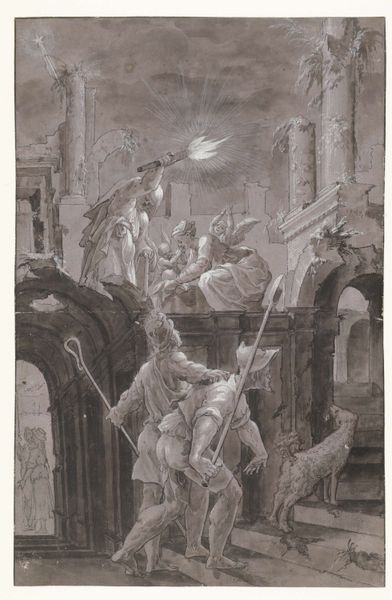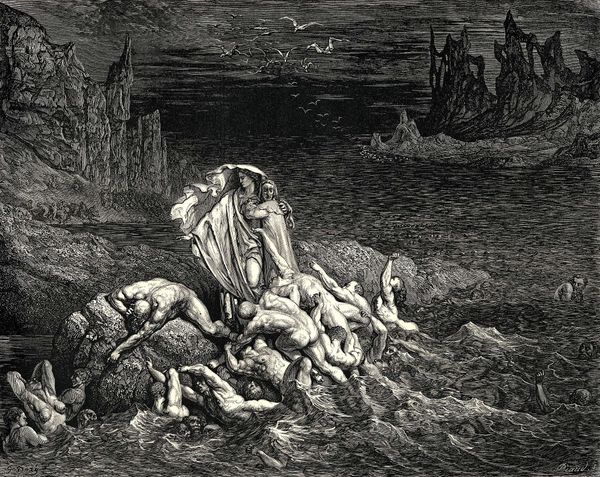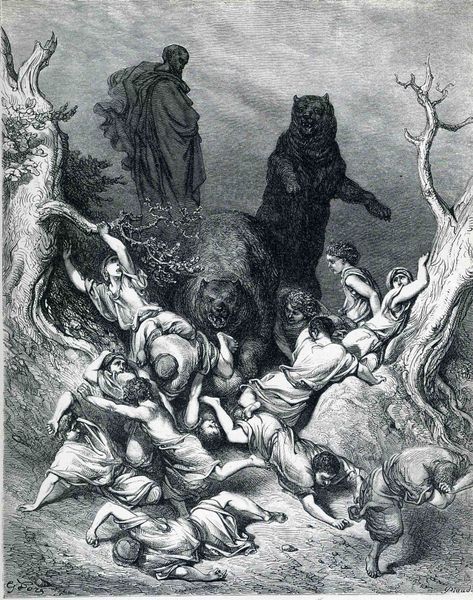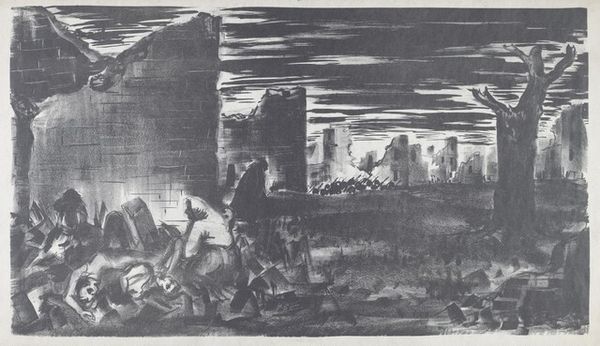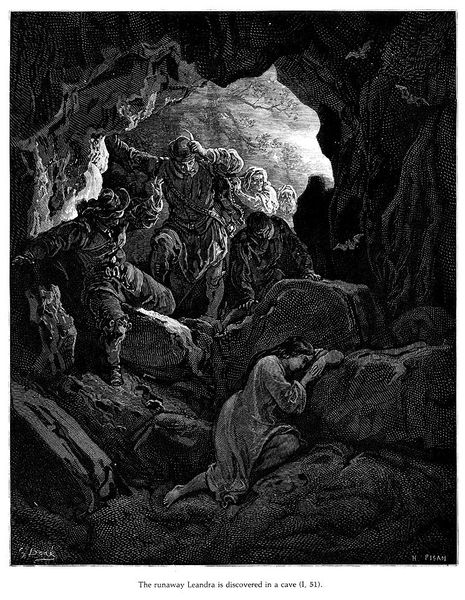
print, sculpture, engraving
# print
#
sculpture
#
landscape
#
figuration
#
column
#
sculpture
#
romanticism
#
christianity
#
symbolism
#
history-painting
#
engraving
#
christ
Copyright: Public domain
Art Historian: Today, we're looking at “Babylon Fallen,” a print attributed to Gustave Dore. What catches your eye first? Curator: The stark contrasts! It's overwhelmingly dark, but pierced with intense highlights—especially the eerie moonlight bathing these monumental ruins. The depth Dore achieves with the hatching and cross-hatching is incredible, giving everything such palpable texture. Art Historian: Indeed. Dore created many such engravings illustrating scenes from the Bible and other religious and literary texts. This image speaks directly to the biblical prophecy of Babylon's demise, a city synonymous with luxury and moral decay. It would have resonated powerfully with 19th-century audiences concerned about social and industrial changes. Curator: The composition certainly evokes that sense of ruin and decadence. See how the architectural details – massive columns, fragmented statues of hybrid creatures – all lean and crumble? There’s this insistent verticality that’s been disrupted, making everything feel unstable. It's dynamic, yet still grounded. Art Historian: Dore was very successful at using architecture to create a palpable mood, an unsettling reflection on political structures. Babylon, often seen as an ancient superpower, succumbed to its excesses, embodying a warning for other civilizations and empires. This visual statement has so much to do with how architecture signifies power and vulnerability within history. Curator: Precisely, there are very few humans depicted in the work, allowing us to focus on how the non-human elements become a kind of surrogate for human ambition. But, to get back to technique: Dore’s virtuosity in creating those gradations of tone is stunning! Each line seems precisely placed to build up volume and create that pervasive atmosphere. I admire how the artist makes something as solid as a column seem spectral! Art Historian: I am stuck on how print media could deliver a widely distributed, visually potent critique on society! Curator: This piece stays with you long after viewing. The ruined majesty speaks for itself, as do the echoes of the divine in the image. Art Historian: Absolutely. It also challenges us to question how societal values contribute to both grandeur and eventual destruction.
Comments
Join the conversation
Join millions of artists and users on Artera today and experience the ultimate creative platform.
